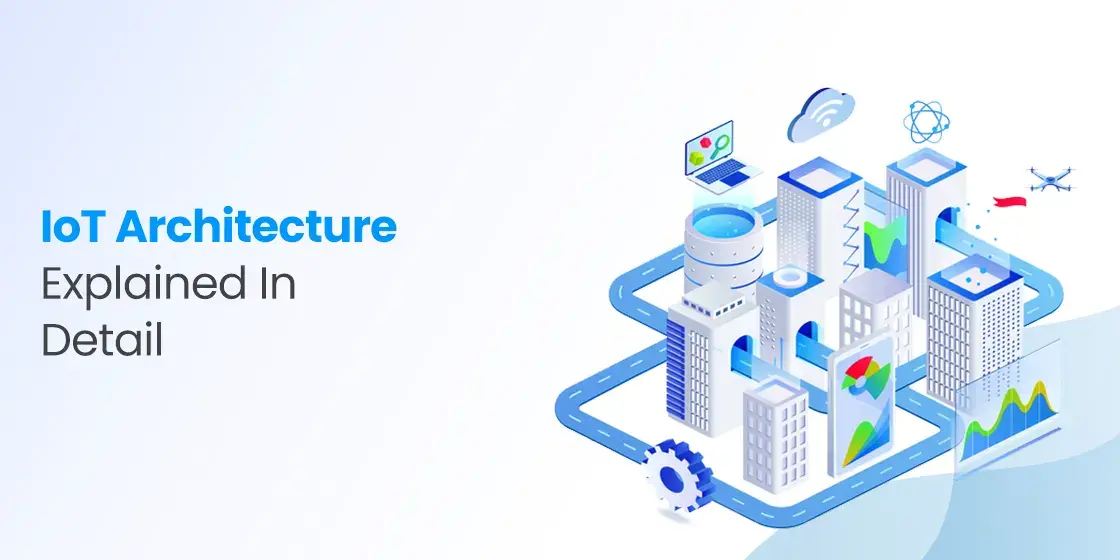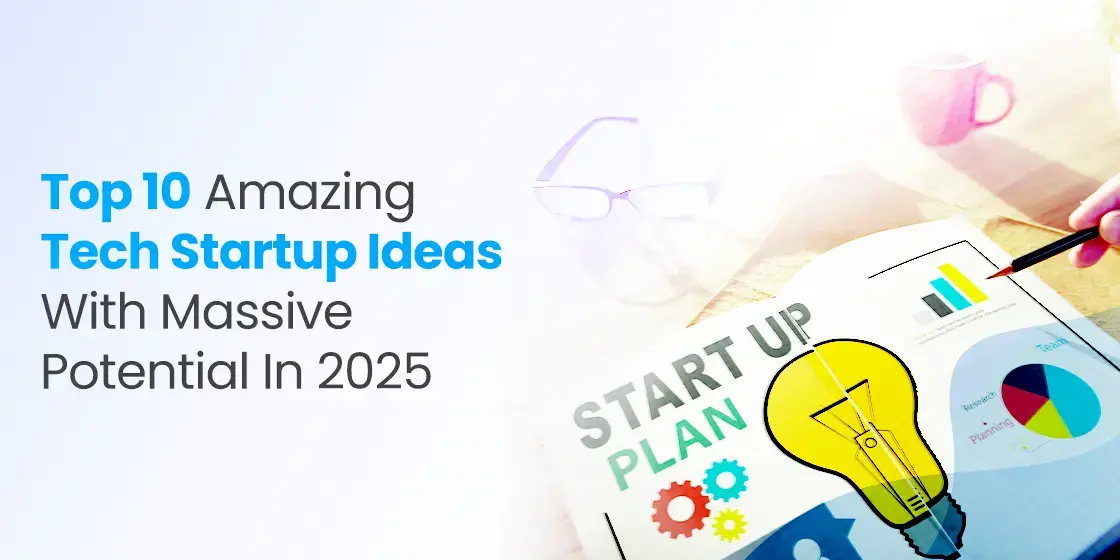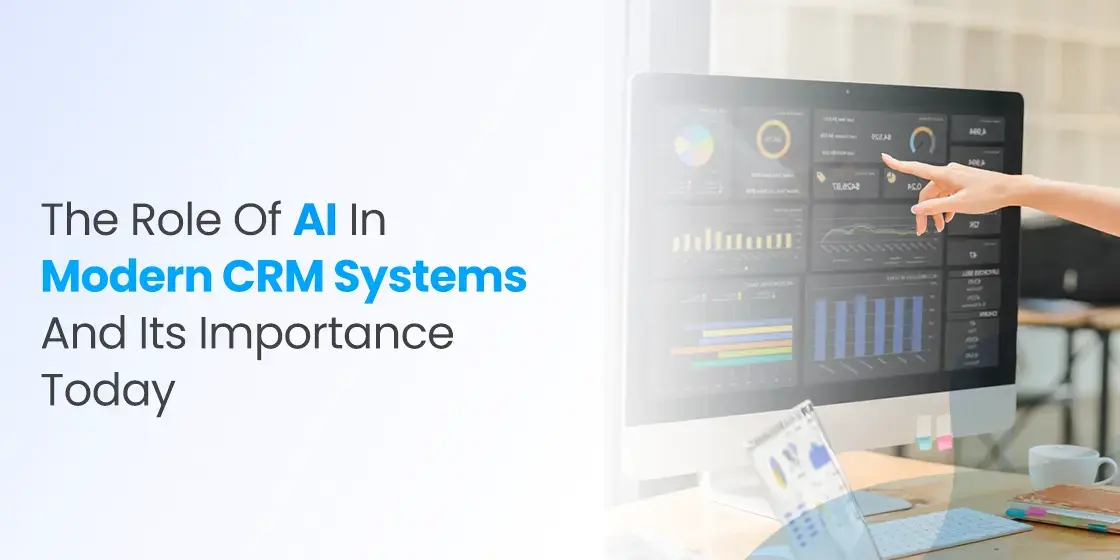Table of Content
Know About the Core Stages and Levels of IoT Architecture Below
During the last few years, many new technologies have emerged in the world. The names of IoT and AI are rated on top among many contenders, as both of them have shown immense signs of growth in the years to come. Their implications across diverse sectors is the main thing that is talked about mostly in the industry. This the core reason why every organization wants to hire a software development company that has got good knowledge about IoT architecture. They understand that building the base of their business on IoT can prove to be very fruitful for the future. This is why the demand of skilled professionals precisely becomes more, as these resources are termed critical for them.
Talking about IoT, it is a technology that is offering a streamlined approach to automate different processes. The most impressive thing about IoT is that it has got applications across multiple industries. This means that IoT is not just limited to the IT sector, but is fully beneficial for other sectors as well. From healthcare to clothing, IoT is transforming businesses everywhere around the world. It offers countless automation benefits, which is what makes it special among other key technologies trending in the market.
The implementation of IoT is however a difficult job as compared to other technologies. The reason is that IoT is a quite complex technology that requires in-depth knowledge about various technicalities. This is where many individuals struggle, because most of them do not have much idea about technical complexities. They do not know how IoT architecture is built, or what type of resources are used in it. In this blog, we will discuss exactly about that, so that beginners can understand how IoT architecture works and what type of methodologies are used in it.
Let us first start from the basics understanding the rising importance of IoT technology, as why it is quickly becoming popular in the world.
The Rising Popularity of Internet of Things (IoT)

The Internet of Things (IoT) has witnessed a meteoric rise in popularity, transforming the way we interact with technology and the world around us. One key driver of this surge is the increasing integration of smart devices into everyday life. From smart thermostats that optimize energy consumption to wearable fitness trackers that monitor health metrics, IoT devices offer convenience and efficiency.
This trend is further fueled by the growing connectivity infrastructure, including widespread access to high-speed internet and the deployment of 5G networks, enabling seamless communication between devices. The currently trending traffic management system through IoT-based infrastructure is a perfect use case of the above defined infrastructure. Many big cities in the world are using IoT in transportation to manage their day-to-day traffic plans, including New York, London, Amsterdam and more others.
Meanwhile, businesses are also embracing IoT technology to enhance operational efficiency and gain a competitive edge. Industries such as manufacturing, agriculture, and healthcare are leveraging IoT devices to collect and analyze data in real time, leading to more informed decision-making and improved processes. For instance, in agriculture, IoT-enabled sensors can monitor soil conditions, weather patterns, and crop health, allowing farmers to make data-driven decisions to optimize yields. These are the core applications that has made IoT hugely popular, and hence its future is looking more bright than ever.
What is IoT Architecture?

The Internet of Things (IoT) architecture is a framework that outlines the structure and organization of the components involved in the implementation of IoT solutions. It provides a systematic approach to designing and deploying IoT systems, ensuring seamless communication and interoperability among the various devices and components. IoT architecture typically consists of several layers, each serving a specific purpose in the overall functionality of the system. The detailed breakdown of the key components within an IoT architecture is defined below.
Sensing Layer
First up, we have got the sensing layer. This layer represents the physical devices or sensors that collect data from the environment. These sensors could include a wide range of devices such as temperature sensors, cameras, motion detectors, and more. The data collected is then processed and sent to the next layer for further analysis. It is therefore recommended to build or deploy this layer accurately, as all the data going forward for processing depends on it.
Network Layer
Next, we have got the network layer that is extremely important in the IoT architecture. The network layer is responsible for the communication between the IoT devices and systems. It involves the transmission of data from the perception layer to the subsequent layers and vice versa. Various communication protocols, such as MQTT (Message Queuing Telemetry Transport) or CoAP (Constrained Application Protocol), may be used to ensure efficient and secure data transfer.
Middleware Layer
After that, the functionality of the middleware layer comes into play. It is an important level that acts as an intermediary between the application layer and the network layer. It includes several components that handle different types of tasks related to the logical functioning of IoT devices. It is therefore recommended to build a strong understanding of the middleware layer, as it performs multiple troubleshooting and execution tasks simultaneously.
Application Layer
Next, the name of the application layer comes into the picture of IoT architecture. It is basically the level where the data is processed to derive meaningful results or trigger some kind of action. This layer may include applications for data analytics, machine learning algorithms, and other software solutions that leverage the collected information. In short words, it is where decisions are made based on the analyzed data coming from the pipeline above.
4 Key Stages of IoT Architecture
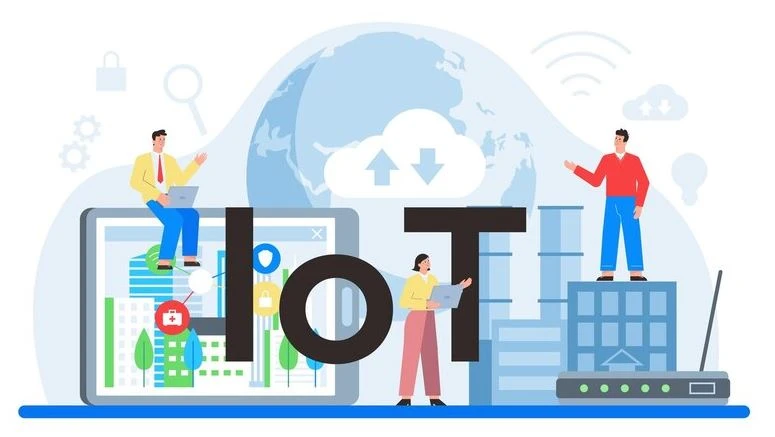
For starters, the IoT architecture can be explained as a four-level computational approach. This might sound difficult, which is why we have explained these levels in detailed below. They are basically the building blocks of IoT architecture where everything is processed, managed and forwarded after analyzing the core metrics of the data.
Let’s take a quick look at these important blocks below.
IoT Devices
This phase concerns the tangible components within IoT solutions, which may encompass sensors or actuators situated in the perception layer. In the case of sensors, these devices generate data, while actuators take action in response to their surroundings. The generated data is transformed into a digital format and then transmitted to the internet gateway stage. Usually, unless a pivotal decision is required, the data is transmitted to the next stage in its raw state. This is owing to the constrained resources of the devices themselves.
Internet Gateway
The internet gateway stage is responsible for receiving the unprocessed data from the devices and conducting preliminary processing before transmitting it to the cloud. This gateway may be physically connected to the device or operate as an independent device capable of communicating with sensors through low-power networks, facilitating the relay of data to the internet. It is therefore recommended to configure this block properly, as all the communication heavily depends on it.
Edge Computing
To expedite data processing, directing your data to the cloud’s edge becomes essential. This approach enables swift data analysis, allowing prompt identification of issues requiring immediate attention. Typically focused on recent data necessary for time-sensitive operations, this layer may also involve some pre-processing to restrict the amount of data eventually transferred to the cloud. The administrators are required to monitor this level properly, as it takes several logical decisions.
Cloud Data Center
In this final phase, data is archived for subsequent processing. Within this stage, the application and business layers operate, utilizing the stored data for feeding dashboards or management software. Generally, in-depth analysis and resource-intensive tasks are managed in this stage, such as machine learning training is briefly carried out in this stage.
IoT Architecture Use Cases
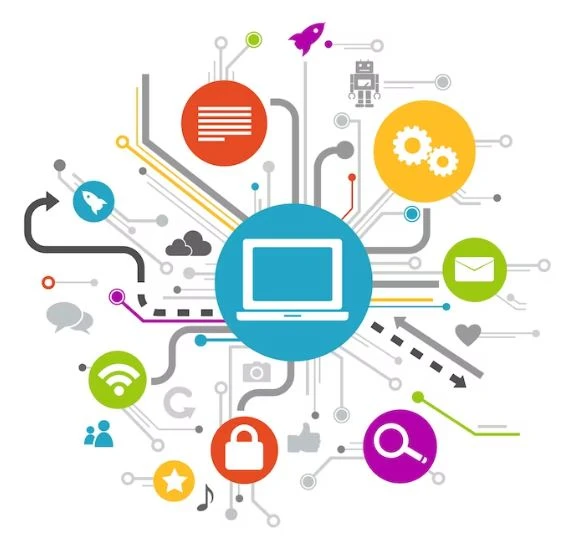
Building a strong IoT architecture can help you transform different types of businesses. As defined above, the technology is not just related to the IoT sector, but is beneficial for many other non-tech companies as well that are looking to elevate their business processes.
If you do not know which industries other than IT can take good benefits from IoT, take a look at the list given below. It will open up your mind how IoT is revolutionizing different sectors that have got the potential to move forward with the new age technology.
IoT in Healthcare
Healthcare is one of those sectors where IoT can really play a big role. Its application in connecting different departments of a hospital looks to be very promising. Besides that, it can be used in different processes to streamline various types of work. It includes fast diagnosis of disease, report generation, machine interconnectivity and more others.
With the help of IoT, doctors can get their hands on advanced systems that can interpret patients’ data at a very fast speed. It can bridge the gap between analysis and efficacy, as sometimes even experienced doctors fail to read critical data due to working with mediocre computational resources. In short, all of these benefits increase the importance of IoT in healthcare, hence we will surely tend to see its growth in the coming years.
IoT in Agriculture
Agriculture is another sector where we can see a huge implication of IoT in the near future. Currently, farmers around the world do their jobs manually. This not only takes a lot of time, but also plenty of hard efforts in the process. However, with the integration of technologies like IoT and AI, things can become a lot easier for the farmers and the companies that are associated with agriculture.
Currently, a major challenge for farmers is to work in the field with a limited infrastructure of technology. This thing can rapidly change with the integration of IoT in agriculture. It offers a powerful architecture that can help farmers to automate different manual jobs. From monitoring soil temperature to using autonomous tractors in the field, the advanced IoT architecture has a lot to offer to amplify the growth of the agriculture field.
IoT in Manufacturing
The manufacturing industry has certainly taken a good advantage of IoT technology by integrating its infrastructure smartly. Many companies have integrated the IoT in manufacturing to take a leap in the growing industry. The rising competition is yet another a factor why technologies like AI and IoT are quickly getting adopted. Every player understands the importance of task automation in manufacturing, and how IoT can help them to achieve that feat swiftly.
Talking about the core benefits, IoT architecture can help manufacturing companies to get insights about different processes that are connected within the environment. This precisely builds a cohesive environment where everything from production to quality assurance can be monitored easily without making any glitch. It can improve the cycle time, and can help companies to understand the baseline of production accurately.
IoT in Retail
Just like transportation and manufacturing, the implication of IoT in retail industry is quite huge. It offers various ways to the retail companies to get stunning benefits of automation. IoT and big data consulting enable brands to integrate bluetooth beacons, sensors, GPS, and RFID tags into their products and assets. This gives them the ability to monitor the location, status, and movement of their products in real time.
Cloud-based IoT systems enable retail businesses to monitor and manage their assets and inventory in real time. This data can help them optimize their operations, lower their expenses, and enhance their customer experience. This trend can grow fast as more and more companies are adopting IoT in their business strategies. It is very effective in boosting productivity, as well as reducing operational cost of retail businesses in various domains.
Final Words
That sums up our entire blog in which we have discussed about the basics of IoT architecture in detail. It is one of those technologies that is rising quite fast. The impact of IoT can be seen across different industries, including healthcare, construction, manufacturing and more others. So, it is important for IT engineers to know about the process of building a strong IoT architecture. It includes different components, hence the knowledge of integrating them in a unified style is termed very important. This blog has discussed different points how IoT architecture can be perfectly implemented, so it is a good read for the beginners.
Meanwhile, if you are looking for a company that can help you to develop advanced IoT-based applications, get in touch with us today. We have got plenty of experience in software development, hence our experts can help you to develop all types of apps according to the given demands.
Empower your digital initiatives with BariTechSol, a premier custom software development company. Our skilled team tailors cutting-edge solutions to your unique needs. Elevate your tech experience and stay ahead in the digital realm. Partner with BaritechSol and code the success of your next big idea.
